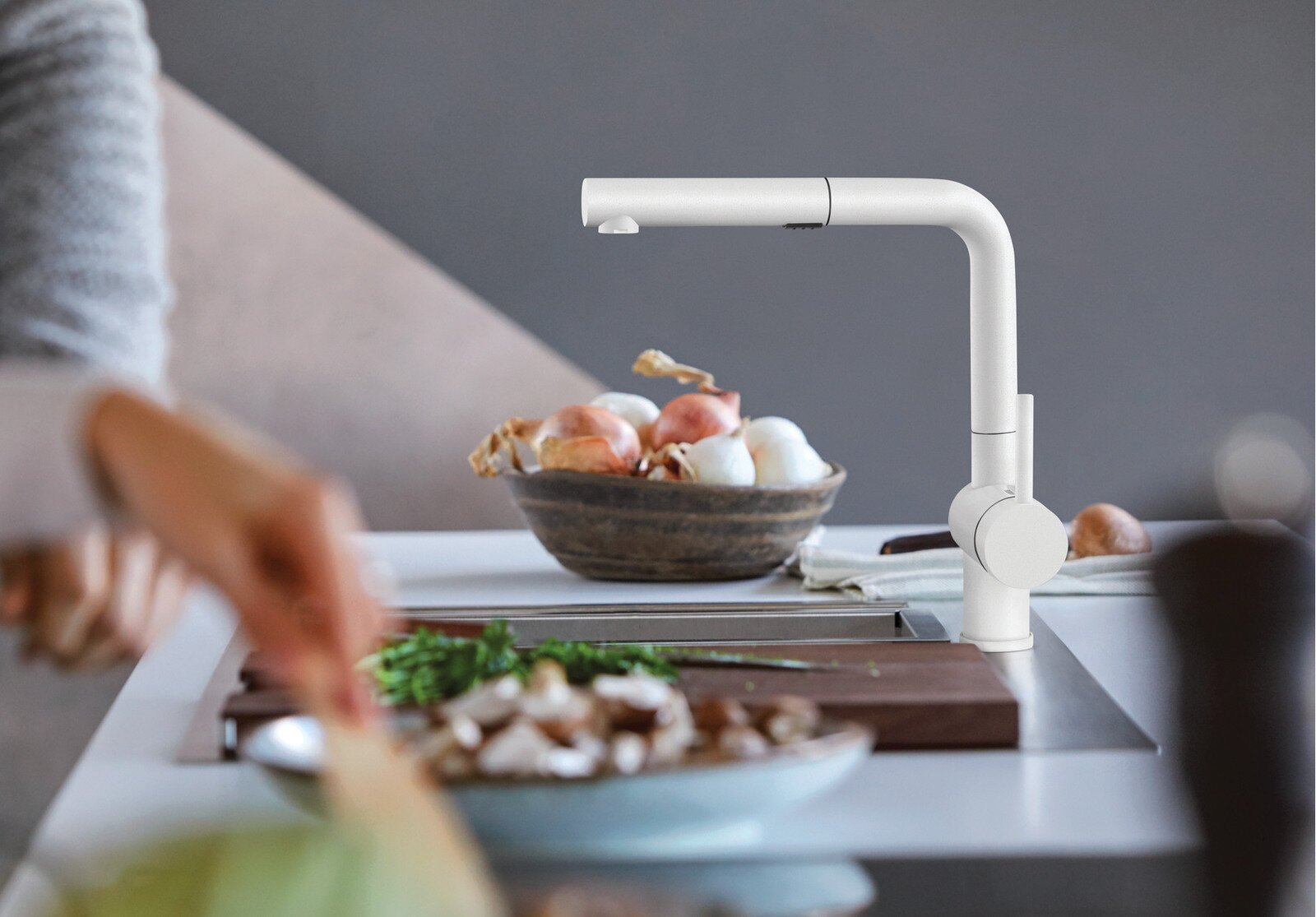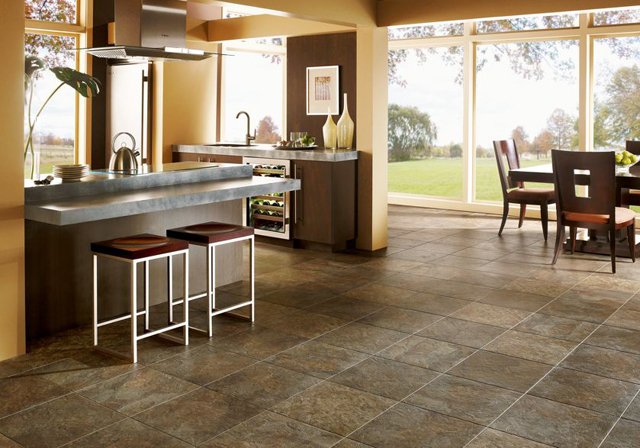When considering the best kitchen faucets for your home, several essential features come into play. The first aspect to evaluate is the material durability of the faucet. High-quality materials such as stainless steel, brass, or bronze not only enhance the faucet’s longevity but also resist tarnishing and corrosion. This is particularly crucial for kitchen faucets, which are exposed to substances that can cause wear over time.
Design and finish options are also critical in selecting the perfect faucet. Aesthetic appeal plays a significant role in integrating the faucet with the overall kitchen decor. Contemporary designs, various finishes such as polished chrome or matte black, and unique styles can elevate the kitchen’s look while providing functionality.
The flow rate of a faucet is another vital feature to consider. The best kitchen faucets often balance a good flow rate with water-saving capabilities. Many modern faucets are designed to conserve water without compromising performance, ensuring efficient usage during daily tasks such as washing dishes or filling pots.
Installation type should be taken into account as well. Whether you prefer a single-hole or a three-hole setup can dictate your faucet choice. It’s essential to ensure compatibility with your existing sink or countertop to facilitate a smooth installation process.
In addition to these basic features, advanced functionalities can significantly enhance your kitchen experience. For example, pull-down sprayers offer flexibility and ease of use in various kitchen tasks, while touchless technology allows for a hands-free operation, making it more hygienic. Certain faucets also come equipped with integrated water-saving features, promoting eco-friendly practices without sacrificing convenience.
Considering these features will help you choose the best kitchen faucet that meets your needs, combining style with practicality for an efficient kitchen experience.
Our Top Picks for Kitchen Faucets
Choosing the right kitchen faucet can greatly enhance both functionality and aesthetic appeal in your culinary space. Below, we present a curated selection of the best kitchen faucets of 2023, designed to cater to various preferences and budgets.
1. Moen Arbor Pull Down Kitchen Faucet – Renowned for its elegant design and exceptional performance, the Moen Arbor features a high arc and a pull-down sprayer that offers both power and precision. The faucet is equipped with Moen’s Magnetix technology, ensuring a secure sprayer dock, which enhances user experience. Its spot-resistant finish makes cleaning easier, ideal for busy home chefs.
2. Delta Faucet Lenta Pull Down Kitchen Faucet – A modern addition to any kitchen, the Delta Lenta boasts an integrated spray head that allows users to easily switch between aerated stream and spray modes. With Touch-Clean spray holes, maintenance is hassle-free. The sleek design combined with advanced features makes it one of the best kitchen faucets on the market.
3. Kraus KPF-1610SS Modern Kitchen Faucet – This dual-function faucet is known for its sturdy construction and stylish look. With a commercial pull-down sprayer and ergonomic handle, the Kraus KPF-1610SS ensures ease of use and exceptional durability. Customers appreciate its easy installation process, making it a top choice for DIY enthusiasts.
4. Pfister G13320SRS Pull Down Kitchen Faucet – The Pfister G13320SRS combines an affordable price with a contemporary design. It features a pull-down sprayer with a convenient toggle function, enabling users to switch water flow settings effortlessly. This faucet is well-regarded for its performance and attractive finish, making it a suitable option for homeowners on a budget.
This selection of the best kitchen faucets reflects a diverse range of styles and functionalities. By considering your kitchen’s unique requirements, any of these faucets can significantly improve your culinary environment.
Installation Tips for Your New Kitchen Faucet
Installing a new kitchen faucet can seem daunting, but with the right tools and preparation, it can be a manageable DIY project. Before starting, gather the necessary tools: an adjustable wrench, screwdriver, basin wrench, plumber’s tape, and a bucket. A good idea is to lay down a towel or cloth under the sink area to catch any drips. Additionally, ensure that you have a replacement kitchen faucet on hand, ideally one that is compatible with your sink configuration.
Begin by thoroughly shutting off the water supply to avoid any accidents. Then, remove the old faucet by disconnecting the water lines and unscrewing it from the sink. Be prepared for some residual water, which is where the bucket will come in handy. Clean the sink surface thoroughly to prepare for the new installation.
Next, it is crucial to follow the manufacturer’s instructions for installing your new faucet. Generally, you should start by positioning the new faucet in the mounting holes and securing it with screws, ensuring it’s tight enough to prevent leaks but not so much that it risks damaging the finish. Connect the water supply lines using plumber’s tape to ensure a tight seal. Tighten connections with the adjustable wrench, but be careful not to overtighten.
Once everything is in place, turn on the water supply slowly and check for any leaks. If you encounter issues, recheck the connections and ensure they are properly sealed. Regular maintenance will help prolong the life of your best kitchen faucets. This includes cleaning the faucet regularly to prevent mineral buildup and checking for leaks. By following these installation tips, you will be well-equipped to enjoy your new kitchen faucet confidently.
Maintaining Your Kitchen Faucet for Longevity
To ensure that you get the most out of your investment in the best kitchen faucets, regular maintenance is essential. Proper care can prolong the lifespan of your faucet and prevent common issues such as leaks and clogs. One of the best practices for maintaining your kitchen faucet is to keep it clean. Regularly wipe down the faucet with a gentle cleanser and a soft cloth to remove any residue or buildup that could hinder its operation. Avoid abrasive cleaners that could scratch the surface and diminish its appearance.
Addressing common issues promptly is vital in maintaining the functionality of your kitchen faucet. For instance, if you notice a leak, inspect the connections and fittings to determine if any parts are loose or damaged. Tightening any loose components can often resolve these leaks. If the issue persists, it may require replacing washers or seals. Similarly, if you experience a clog, it is advisable to check the aerator for debris. Unscrewing and cleaning the aerator can often restore proper water flow.
Regular inspections of the faucet are also recommended to ensure optimal performance. Examine the faucet for signs of wear and tear, particularly at the joints and fittings. Detecting any issues early can prevent more significant problems down the line. Additionally, understanding the warranty that comes with your faucet can provide insights into what maintenance tasks are recommended or required by the manufacturer.
Moreover, considering the faucet’s material is crucial when deciding how to care for it. For instance, stainless steel faucets typically require less upkeep than those made of brass or other metals. Understanding these differences allows for tailored maintenance that can significantly impact the durability and appearance of the best kitchen faucets available on the market.




